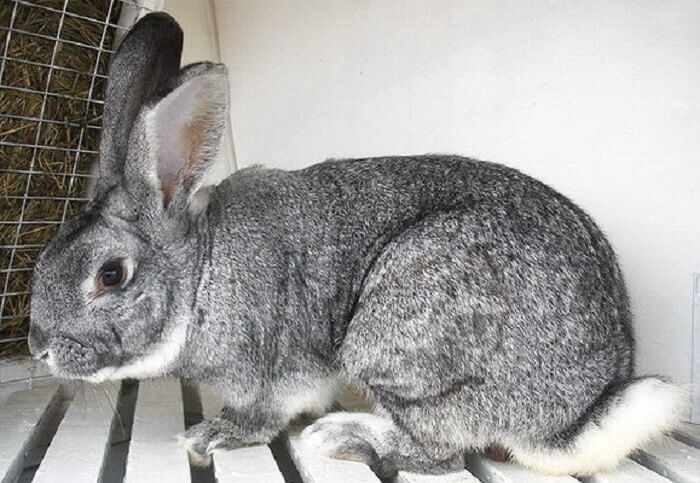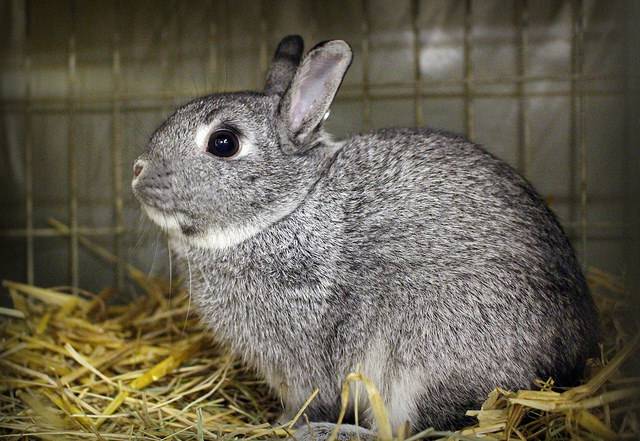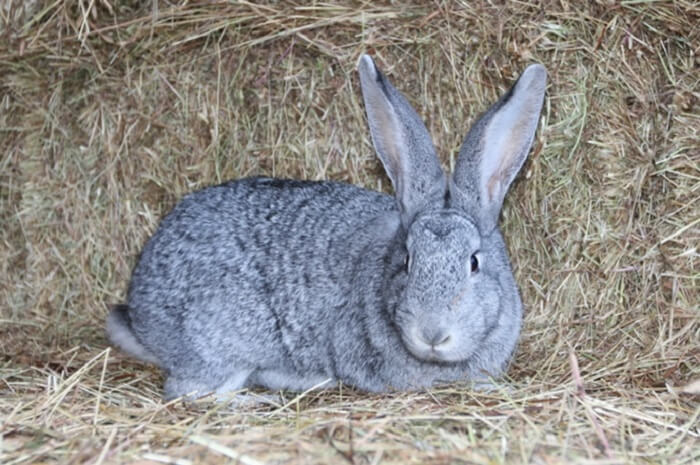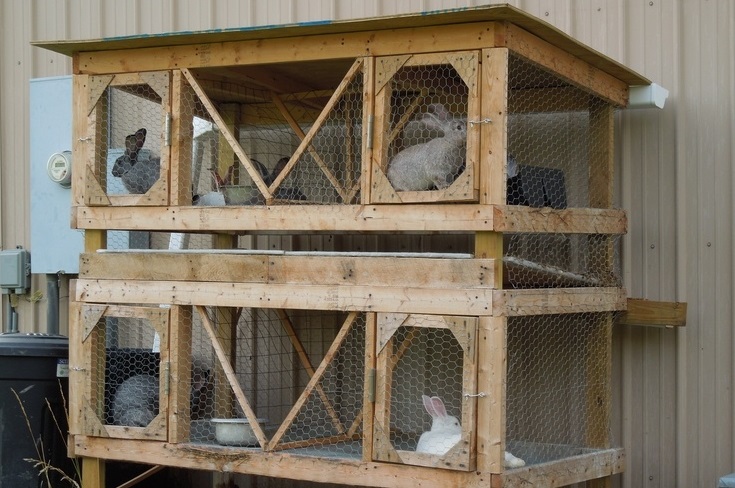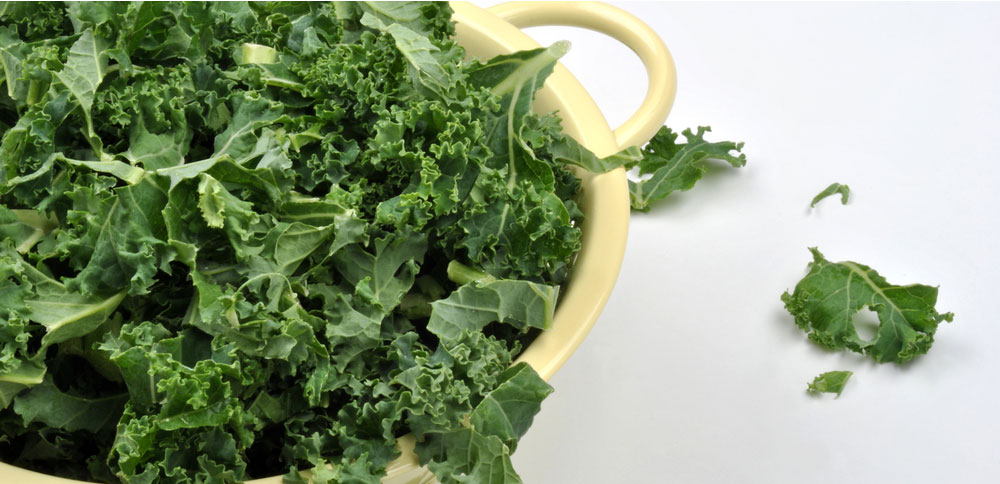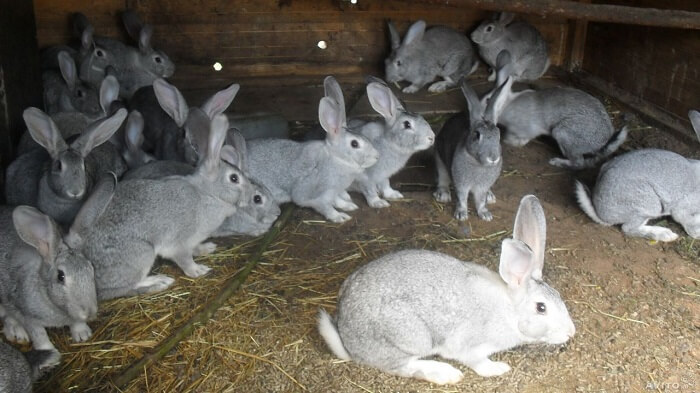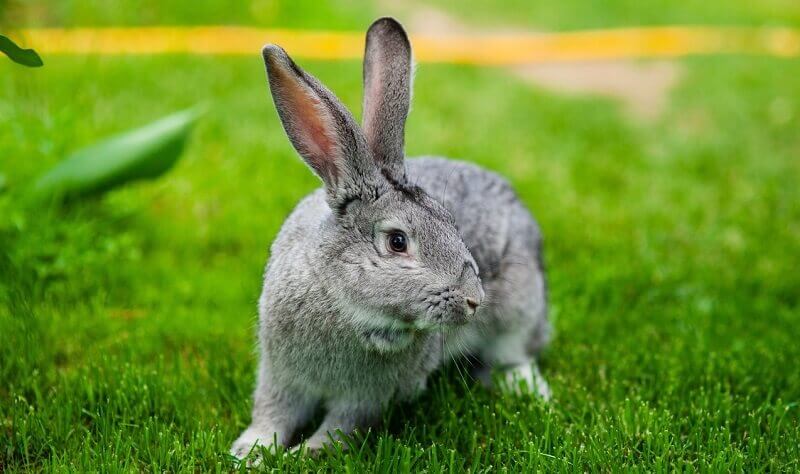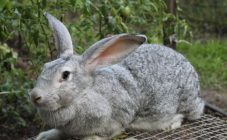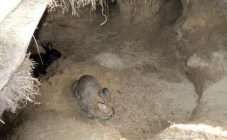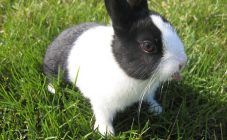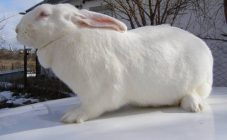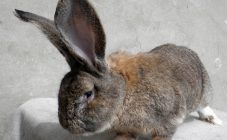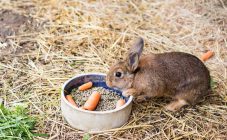Content:
Rabbits of the Soviet chinchilla breed are popular with domestic rabbit breeders. They have a meat-skin orientation: skins are very often used for the manufacture of fur products, and meat is famous for its delicate and dietary taste.
Chinchilla rabbits were bred in France in the last century. They got their name for the similarity in color with the South American rodents chinchillas. They have a large mass and excellent quality of skin and wool. To obtain such rabbits, breeds of miniature chinchilla rabbits and large snow-white giants were crossed.
Such manipulations were carried out by Saratov breeders together with employees of the Novosibirsk Research Institute. The rabbit breed was officially registered in the USSR in the 60s.
Description of the breed
Rabbits are huge in size. Signs of a breed individual:
- The body is powerful and sturdy. The length reaches 70 cm.
- The ribcage is rounded, slightly protruding. Its volume is 40 cm.
- Animals have an arched and elongated back.
- The ears are straight, erect, of medium size.
- The thighs are rounded.
- The limbs are characterized by massiveness, muscularity.
- Small head.
- The average weight of a rabbit is 5-6 kg. The maximum weight of the breed is 8 kg.
Fur characteristic
Rabbits have a very attractive fur that is soft and silky. It is gray-blue in color with small white patches near the eyes and on the belly. The end of the tail and ears are dark in color. Chinchilla fur is very valuable for its density, beauty, high demand.
Characteristics of the breed
The chinchilla rabbit is a very popular species. The breed is characterized by a high percentage of profitability: the income from breeding eared ears fully pays for all costs. The cost of one skin reaches 3000 rubles. A distinctive feature of the breed: young individuals, which are 3.5 months old, look like adult rabbits. This significantly reduces the cost of their maintenance.
Since the breed has a meat-skinned orientation, the chinchilla is characterized by dietary meat with excellent taste. Rabbits gain weight quickly. Sexual maturity occurs at the age of 3.5-4 months. The weight of animals at the time of puberty is 3 kg.
Slaughter yield of meat product is 58%. The carcasses contain almost no bones and tendons. Man assimilates such meat by 90%. Meat contains a large amount of amino acids and vitamins and a small layer of fat. The carcasses are used to prepare dietary and baby food. It almost does not cause allergic reactions.
Rabbit keeping
Rabbits are kept in spacious rabbitries or use a shed system when space is limited.
The Soviet chinchilla is a breed of rabbit that can withstand cold, but not severe frosts. They are afraid of direct sunlight and high temperatures. Animals need a lot of oxygen, so in most farms, cages are placed outside. It is important to protect rabbits from drafts and dampness.
Conditions for keeping this variety:
- The optimum air temperature for keeping breed rabbits is 12-18 ° C. Small deviations of 5 ° are allowed. Critical temperatures are -30 ° C and 30 ° C.Individuals that do not have health problems will withstand such drops for a couple of days, after which they will die.
- The humidity level should be 60-75%. Raising or downgrading will have a detrimental effect on rabbit health.
- Rabbits prefer natural light. However, by placing the cages outdoors, protect against overheating. Additional illumination is provided with short daylight hours. The optimal time for its use is from 9.00 to 18.00.
- Keeping cages clean is one of the main requirements for caring for animals. Cleaning is done at least 2 times a week. The cage is disinfected once every 2-3 months. Rabbits are also provided with good ventilation.
- A balanced diet should be prepared for the animals, rich in seasonal vegetables, fruits, fresh grass, hay, vitamins and minerals.
Shed content includes the construction of cells in several tiers under a canopy. Outwardly, such an installation resembles a small shed, which saves space on the site. With this system, it is imperative to properly build rabbit cages. For this, one cage is divided into 2 parts: for the feed compartment and the maternity ward. They are connected with a special manhole. Two doors are made in the cage: one should lead to the stern compartment, the second - deaf, leading to the maternity ward. The number of cells is divided in half: one half is for females, the other for males.
Shed content in each farm differs in size and parameters of cells. An individual approach to the construction of sheds allows not only to save space, but also to increase the productivity of animals. They allow rabbits to be separated from each other. Among the disadvantages of such content are the need to install heaters in the winter and a decrease in the number of roundabouts, which occur no more than 6 times a year.
Nutrition
When organizing food, the quality and composition of the feed are taken into account. Poor quality food for rabbits will lead to disease and death of animals.
The diet includes dry, juicy feed, root vegetables, seasonal herbs, vegetables, branch feed. In the summer, they increase the amount of green fodder, in the winter they give compound fodders and coarse food.
The food of rabbits must include:
- grains and legumes (wheat, peas, corn, barley and rye);
- fruits and vegetables (cabbage, carrots, tomatoes, potatoes, apples and radishes);
- greens (dill, parsley, beet and carrot tops);
- branch fodder (branches of rowan, plum, pear, apple and pine).
Hay is the basis of the rabbit diet. For animals, it is harvested from meadows and clean pastures located far from swamps. Hay should consist of clover, alfalfa, lupine in the amount of 20% of the total.
In the summer, the rabbit can be given fresh grass, which has withered in the sun for several days.
Rabbit breeding
The chinchilla rabbit is very fertile. In one litter, 8-10 newborn babies can be expected from a rabbit. Females of chinchillas have sufficient milkiness, which makes it easy to hatch such a number of cubs. Rabbits are rapidly gaining weight, getting stronger and growing up. Sexual maturity of individuals occurs at 4 months.
The duration of the sucrol period is 26-36 days. Preparation for the appearance of babies begins 2 weeks before the birth. The cage is disinfected, the floor is covered with large sawdust, dry moss, and straw. A drinking container is installed, in which there must always be fresh water. Rabbits are very thirsty while carrying babies.
Necessary conditions for a comfortable stay of a pregnant rabbit:
- It is worth protecting the home from the invasion of males and other large animals.
- Avoid sudden flashes of light.
- Maintain silence.
- Check for clean water and fresh feed.
- Monitor the health of the animal.
- Do not disturb the female once again.
Breed advantages and disadvantages
The pluses of breeding chinchillas rabbit breeders include:
- Rabbits easily adapt to any weather conditions.
- Not picky about living conditions.
- Bunnies are very productive.
- Rabbits have original color.
- The output is a large amount of dietary meat.
- Fur is of high value.
Disadvantages:
- Rabbits need a lot of space
- Animals are gluttonous.
- In need of capital investments: vaccine against diseases, compound feed.
Chinchilla rabbits are great for small farms and large livestock complexes. The animals are not very demanding in care, they have a good indicator of population growth. They are appreciated for the excellent characteristics of the meat product. Rabbit fur is often confused with chinchilla fur.
